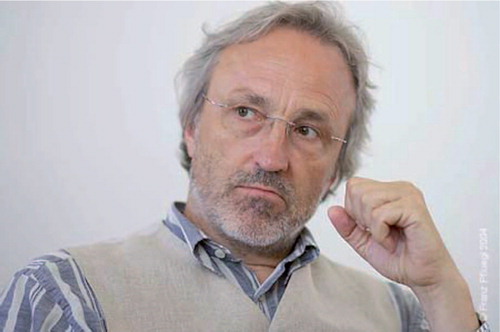
Starting with the Alma Ata declaration in 1978, sustaining, developing and strengthening primary health care (PHC) has been on the political agenda of many countries. Based on ever increasing scientific evidence that strong primary care contributes to improved health system performance and on key publications that extend the declaration of Alma Ata (Citation1), several efforts to accomplish its goals have been undertaken. In some countries, health care systems with new models of PHC services have been introduced. In other countries, specialists are re-trained for a few months in general practice/family medicine (GP/FM) to increase workforce for the primary care level (Citation2). Some countries have introduced specialty training and specialty status in GP/FM and many medical schools have introduced chairs for GP/FM to facilitate teaching and research in FM for undergraduate and graduate students.
However, there is no evidence that the various efforts to strengthen PHC have been successful. In Austria for example, statements about strengthening PHC can be found in the coalition agreements from all recent legislation periods. However, there is a continuous decrease in the attractiveness of working in the primary care sector and an increasing brain drain of medical graduates to other countries in Europe. A promising approach implementing measures to strengthen PHC comes from the current government, which plans to facilitate the change from traditional solo practices of GP to multidisciplinary PHC teams. It remains to be seen, whether this plan with its necessary consequences for the health care sector will reverse the ongoing trends.
Based on my observations and experience from Austria and several other countries, I would like to point out what it needs to strengthen PHC.
Strengthening of PHC can only be accomplished if general practitioners have a strong position in the health care system by coordinating access to specialized care and care across the different levels of health care (Citation3). This includes the regulatory role of gatekeeping or gate opening. If patients, like in Austria, can freely chose the level of care for their health problem, this leads to high hospital admission rates for patients with ambulatory care sensitive conditions and undermines the position of primary care.
Strengthening of PHC can only be accomplished if the discipline and the workforce receive recognition and respect by the public, politicians and specialist colleagues for their work in the health care system. In reality, however, general practice is very often blamed for any problem the health care system may face such as unnecessary delays in diagnoses, polypharmacy or antibiotic resistance.
Strengthening of primary care cannot be accomplished if the remuneration does not reflect the essential role of primary care for an efficient health care system. In most countries when compared to specialists, primary care physicians are paid the least; this supports or maintains the habit of 'under the table payment’ in some countries or of brain drain of trained doctors in others (Citation2).
Strong primary care can only take place where the facilities and working conditions meet the needs of strong PHC. If access to state of the art medication, state of the art point of care testing or modern diagnostic procedures is not provided, the workforce for good PHC will be hard to recruit or to stay on at the primary care service level.
Strong PHC requires comprehensive basic medical education for all students with adequate exposure to GP. However, in Austria the aims of medical schools are guided by the financial incentives provided by the Ministry of Science. They are interested to achieve high research output as assessed by the cumulative scientific impact factor and to recruit highly specialized clinician-scientists for successful applications for research funding in prestigious and specialized areas of high scientific impact. Adequate training of students and future practicing doctors is not their priority.
Strong PHC also needs specific training for graduates, who are best suited to care for unselected patients at the primary care level. However, postgraduate training for GP in Austria takes place almost exclusively at the hospital sector where trainees are needed for administrative and routine work rather than being appropriately trained for their future needs.
Strengthening of PHC can only be accomplished if funding for competitive research in applied research and health services research is secured. If projects from GP/FM have to compete with projects from basic research such as genetics or molecular biology, the outcome is predictable. Similarly, appointing a chair of GP/FM at the university without providing resources to reach a critical size for functioning of the unit will not bring about a change.
Primary care will only be recognized as strong if the field and its representatives are recognized as leaders and pioneers in their continuous efforts to improve the quality of training, research and services in GP/FM. For example, delayed acceptance of or even resistance to quality improvement, to guideline development or to coding of consultations for scientific analyses and for informing health policy in Austria by physician representatives weakens the position of GP/FM.
Overall, strengthening primary care requires more than a policy paper with a declaration of intent. If only a few of the aspects outlined above are introduced, the goal to strengthen PHC will be hard to accomplish. In fact, several if not all of the necessary requirements have to be met at least in a reasonable period. Obviously, the commitment of all players involved and a culture of mutual understanding is necessary. Strengthening of PHC requires a true holistic approach overcoming the multifaceted barriers.
REFERENCES
- Expert panel on effective ways of investing in health (2014). Available at http://ec.europa.eu/health/expert_panel/opinions/docs/001_definitionprimarycare_en.pdf (Accessed 16 October 2014).
- Rechel B, Roberts B, Richardson E, Shishkin S, Shkolnikov VM, Leon DA, et al. Health and health systems in the Commonwealth of Independent States. Lancet 2013;381:1145–55. Available at http://dx.doi.org/10.1016/S0140-6736(12)62084-4 (Accessed 16 October 2014).
- van Weel C, Schers H, Timmermans A. Health care in The Netherlands. J Am Board Fam Med. 2012;25:S12–17.
